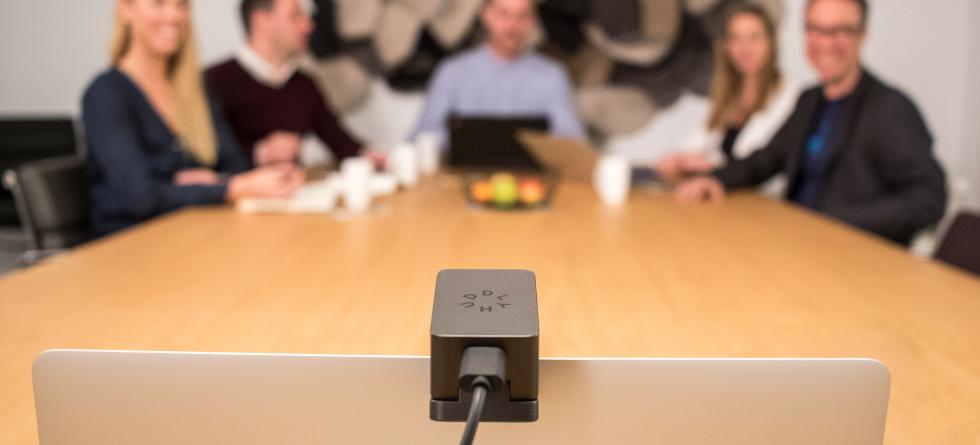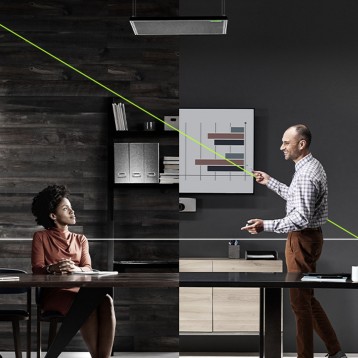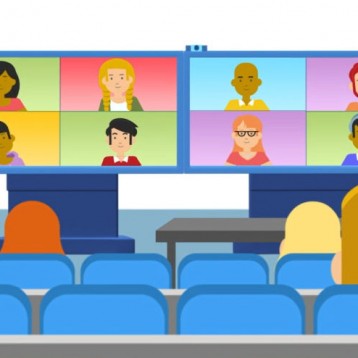Once you have your video meeting hardware, your software or service you are about 80% of the way to having successful video communications. What’s the other 20%, you ask? Priscilla Barolo of Zoom says that the remaining portion is your ability to create a professional appearance, background, and presentation. She provides some top tips for effective video communications…
First, let’s talk about your video and audio. Unless your appearance or background is very inappropriate or distracting, turn ON your video. Video is crucial in building trust and engagement in virtual communications. Don’t skip this step just because you don’t love the way your hair looks today.
Test your video and audio before your meeting. Look at the camera. This takes a bit of getting used to since you want to look at the other participant’s faces (and, let’s be honest, your own face), but try to look at the camera when you’re talking. This tactic will mimic the in-person feeling of eye contact. It’s important to gauge reactions by looking at the screen but alternating that with looking at the camera makes the audience feel like you’re really talking to them.
Cameras
When possible, try to use a good quality camera and headset instead of your computer’s built-in device. Most popular software works just fine with the built-ins, but the quality is even sharper with higher quality hardware.
Adjust your camera if it is too low or high. Only your barber wants to stare at the top of your head. Your camera should be at eye level.
If you can, hardwire your computer into the internet. Zoom, for example, works well on wireless all the way down to 3G, but the quality is best on a solid wired internet connection, so wire in when you can. Otherwise, just make sure you have serviceable Wi-Fi.
 Be Polite!
Be Polite!
Miss Manners here. We live in a civil society, so let’s behave as such. There are some general rules of courtesy for virtual (and in person) business meetings. If you can, hold off on eating full meals during your meeting. Imagine how unappealing it would be to watch someone up close slurping a plate of spaghetti on a big screen. If you can, chow down when your meeting is over. Even though it’s tempting, try not to multitask too much. And if you’re going to, at least mute yourself. You don’t have to be overly prepared for a meeting you’re not hosting, but try to be on time, having glanced at the agenda. Refrain from private behaviour – i.e. scratching your armpits, picking your nose. Remember, you can be seen!
Your Environment
Your surroundings say a lot about you. So, make sure that they say the right things.
Dirty clothes in a pile, an unmade bed, and so forth give the impression that you’re not a professional to be trusted with serious work. Clean up and have a simple background (a plain wall, a potted plant, or a bookshelf works perfectly). You also have the option of using virtual backgrounds to help you disguise even the most recklessly cluttered environments.
Lights, camera, action! Note, the first item here is LIGHTS. Sure, you’re not a starlet, but you still need to be lit. Position yourself so that most of the light is coming from in front of you (behind your monitor), instead of behind you. If you have a window behind you, shut the blinds. Otherwise, you will be backlit. You can even buy one of these nifty monitor lights that will bathe your face in light.
Fun fact: barking dogs and slamming doors are not just annoying in person, they are also annoying on video! Find a quiet space to meet, shut the door, and mute yourself as necessary.
Hone your presentation skills
We spoke with co-founder and principal of BoldEcho and virtual presentation expert, Matt Abrahams, to learn some top tips for presenting on video. Here’s what he had to say…
Use engagement tools! There is nothing worse than someone droning on for an hour, maybe sharing a dense slide or two. Make full use of everything video communication has to offer. Screen share, annotate shared content, send out a quick poll, solicit feedback in chat, split your attendees up into video breakout rooms, send attendees to a website and have them fill out a Google Doc. Do whatever it takes to keep your audience actively engaged.
By the way, you can tell your audience is engaged during screen sharing by using the attendee attention tracking feature available in Zoom and other solutions. If feasible, stand up! This keeps you dynamic and energetic. You can do this during your virtual meeting by using a standing desk. If you do stand, try a slide advancer instead of clicking next on your keyboard for a more natural experience.
Don’t get too close. Position yourself so the camera is seeing you from the chest or waist up, instead of just seeing your face. This is more natural for the viewer (after all, in an in-person meeting you’re usually seeing more of a person than just their face). This is especially beneficial if you tend to gesture a lot.
Your best teacher is yourself. Record yourself and watch the playback with a critical eye. Did you talk too quickly? Too many “ums and ers”? Even send the recording to a friend who you know will give you candid feedback.







